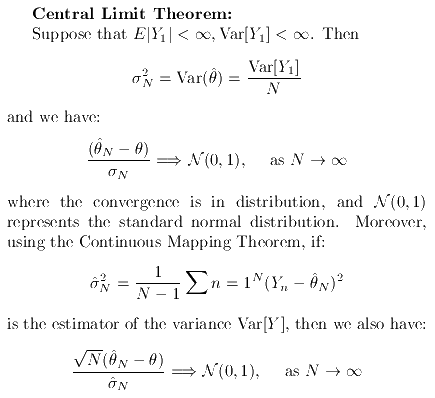
by Felisa J. Vázquez-Abad and Yanick Champoux

|
Basic Notions
Cross Referencing: |
Finite Horizon EstimationA finite horizon simulation consists of a simulation of a stochastic process over a fixed period of time, called a ``horizon''. The quantity of interest is often a function of the process at the end of this period. We suppose that we can produce independent trajectories of the process, thus obtaining a sequence of i.i.d. values. 
THE CENTRAL LIMIT THEOREM: In order to approximate the estimation error, we use the asymptotic distribution of the sample average, as the simulation length (or number of trajectories) increases. 

THE CONFIDENCE INTERVAL: We can use the CLT above to give an approximate confidence interval, using:
The coverage of the above confidence is the area below the dotted line btween the two red vertical lines as shown in the plot above. It may be a poor one (smaller than the desired confidence level) if the simulation length is not sufficiently long. WARNING: When we have more information about the estimators, we can construct more accurate confidence intervals. In this primer we illustrate a common and rather general method that works under the indicated assumptions, but there exists a variety of altenative methods that should be used when possible. |

|
SimSpiders Main Page |  |